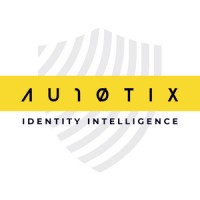Estimated reading time: 5 minutes
Just in case you missed it, the internet went wild a few weeks ago when a picture of Pope Francis wearing a white puffer jacket went viral. People were sharing the photo with comments about how trendy the 86-year-old pontiff looked. The problem was … the photo was a fake.
We can all look back on that incident now and say to ourselves, “Oh yeah, I could tell it was fake. I wanted to just get in on the fun.” And you may or may not think that’s okay. However, it does raise questions about deepfake technologies and their potential impact on the business world. After all, we use employee images on ID badges, security access, and more.
To help us understand deepfake technologies and how they might impact business, I spoke with Mark Brady, VP of emerging product at AU10TIX, a global technology leader in identity verification and management solutions. AU10TIX was recently named best identity-as-a-service platform in the 7th Annual FinTech Breakthrough Awards.
Mark, thanks so much for being here. Let’s start with a definition. What is deepfake technology?
[Brady] Deepfakes are counterfeit, manipulated images or audio of a person, either living or dead. They are created using powerful deep learning technologies and can be incredibly convincing. Over time, this technology has evolved from a crude set of professional tools to off-the-shelf packages, enabling fraudsters to produce convincing images even in real-time streaming videos. Deepfake backgrounds are also becoming increasingly realistic – movements and gestures are uncannily realistic, and voices can be accurately morphed.
What are the benefits and risks of deepfake technology?
[Brady] Typically when deepfake technology is mentioned, it’s in a negative light. Although there are numerous risks associated with the technology, there are also benefits.
Benefits:
- Education: The technology can be used in educational settings to create simulations and training modules that simulate real-life scenarios.
- Research: Deepfake technology can be used in research to better understand human behavior, language, and facial expressions.
- Accessibility: We can also use deepfakes to assist the disabled by creating realistic sign language videos, generating speech for those who are unable to speak, etc.
Risks:
- Misinformation: Deepfake technology can be used to create fake news or misleading information, which can have serious consequences for individuals and society.
- Privacy: The technology can be utilized to violate people’s privacy by creating fake videos or images that depict them in compromising or embarrassing situations.
- Fraud: Fraud can be committed through the creation of deceptive video or audio recordings.
As a human resources professional, I could see one of the risks in deepfake technology being the possibility of having employee IDs/credentials duplicated. How prevalent is this issue?
[Brady] With workplaces continuing to allow ‘work from home’ flexibility, solutions that enable remote onboarding and enhanced security when accessing company internet protocol (IP) are crucial. These issues are still top of mind as well, for example: Microsoft surveyed 3,000 enterprises and found that 82% of people want a better way to address these concerns.
Many organizations see digital IDs and verifiable credentials (VC) as potential solutions for this issue, but data retention responsibilities have delayed mass adoption.
Is there anything that organizations can do to reduce the risk of deepfake identity fraud? How does a verifiable credential work?
[Brady] At AU10TIX, we recently collaborated with Microsoft on a groundbreaking solution called Reusable ID, which offers a promising approach for HR departments. It introduces a reusable, unalterable digital credential that is securely stored on the user’s device, providing a decentralized and tamper-proof solution. This local storage approach aims to minimize the risk of data breaches and unauthorized access, as the credentials are not stored on a central server.
One notable advantage of AU10TIX Reusable ID is its utilization of advanced artificial intelligence (AI)-powered authentication and verification technology. This technology plays a crucial role in ensuring the authenticity of the user’s identity, making it more challenging for fraudsters to employ deepfake techniques to verify fake identities.
Last question. And I want to switch perspectives. So far, we’ve been talking about what organizations can do to protect themselves. For employees who might be reluctant to participate in this type of program, what can organizations say to encourage user adoption?
[Brady] It is common for employees to distrust new technology. Understandably, the thought of a machine being able to recognize you can be nerve-wracking. It’s vital that organizations reassure their employees that the technology will be used ethically, and their privacy will be safeguarded. It’s also a good idea to host training sessions so that everyone can become more familiar with the process.
To encourage employee adoption, organizations can emphasize such benefits as how the technology can help streamline and simplify various activities, like onboarding, accessing company resources, and securing remote work. They could also focus on how the technology helps protect employees’ personal information and prevents identity theft and other forms of fraud.
I want to thank Mark for sharing his knowledge and expertise with us. If you want to learn more about identity verification technology, AU10TIX has a blog you might want to check out.
The technology breakthroughs we’re seeing right now with artificial intelligence, chatbots, and the metaverse are very exciting. The potential is tremendous. But we need to balance our enthusiasm by understanding the risk. Looking at new developments – like deepfake technology – from all perspectives gives organizations the ability to make good decisions that will benefit the business.
Image captured by Sharlyn Lauby while exploring the streets of Las Vegas, NV
The post Everything HR Needs to Know About Deepfake Technology appeared first on hr bartender.





0 Commentaires